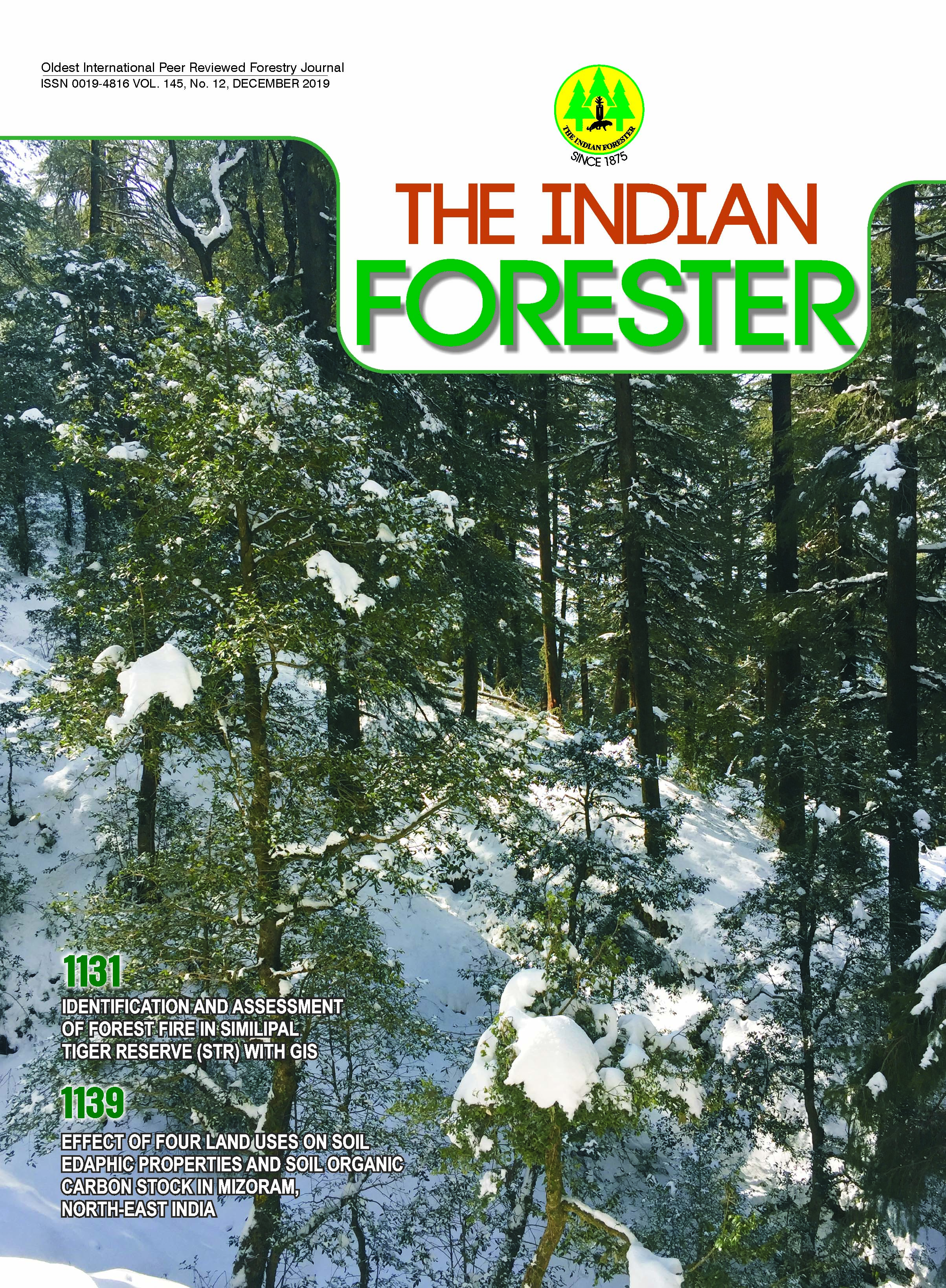Chemoenzymatic Saccharification of Artocarpus heterophyllus Lam. (Jackfruit) Peel Waste and its Utilization for Bioethanol Production
DOI:
https://doi.org/10.36808/if/2019/v145i12/150652Keywords:
Bioethanol, Jackfruit, Chemo-Enzymatic, Reducing Sugar, Fermentation, Saccharomyces.Abstract
Cellulose and hemicelluloses are the most abundant renewable bio-macromolecules found in the biosphere. Bioethanol has received special attention worldwide due to gradual depletion and increasing price of fossil fuels. Bioethanol from cellulosic biomass has gained popularity because of convenience in processing and economic nature. In the present study, chemo-enzymatic saccharification of jack fruit peel waste was employed which yielded upto 30.58 g/L of reducing sugar. Fermentation was carried for bioethanol production by using filtrates of treated jackfruits peel extract with Saccharomyces cerevisiae. Bioethanol yield was monitored throughout a fermentation period of 5 days; bioethanol yield was found to be a maximum of 3 g/L from jack fruit peel waste hydrolysate after distillation. The use of jackfruits peel for the production of bioethanol shall provide with a novel perspective to recycle organic wastes for renewable energy.References
Abedinifara S., Keikhosro K., Khanahmadic M. and Taherzadehb K.J. (2009). Ethanol production by Mucorindicus and Rhizopusoryzae from rice straw by separate hydrolysis and fermentation.Biomass Bioenergy, 33: 828-833.
Anwar Z., Gulfraz Md. M., Javaid A., Imran Md., Akram Z., Mehmood S., Rehman A., Anwar P. and Sadiq A. (2012). Bioethanol productions from rice polish by optimization of dilute acid pretreatment and enzymatic hydrolysis. Afr. J. Biotechnol., 11(4): 992-998.
Bennett C. (1971). Spectrophotometric acid dichromate method for the determination of ethyl alcohol. Am. J. Med. Technol., 37:217-220.
Caputi A.J., Ueda M. and Brown T. (1968). Spectro photometric determination of ethanol in wine. Am. J. Enol. Vitic., 19:160-165.
Cassman K.G. and Liska A.J. (2007). Food and fuel for all: realistic or foolish. Biofuels Bioprod Biorefin., 1: 18-23.
Choi I.S., Lee Y.G., Khanal S.K., Park B.J. and Bae H.J. (2015). A low energy cost effective approach to fruit and citrus peel waste processing for bioethanol production. Appl. Energy, 140:65-74.
Chongkhong S., Lolharat B. and Chetpattananondh P. (2012). Optimization of Ethanol Production from Fresh Jackfruit Seeds Using Response Surface Methodology.J. Sust. Energy Environ., 3:97-101.
Devi R., Kumar A. and Kumar S. (2016). Use of pine needles as a substrate for biogas production. Int. J. Renew. Energy Res., 6(4):1242-1247
Elsayed B. and Belal (2013). Bioethanol production from rice straw residues. Braz. J. Microbiol., 44 (1):225-234.
Fayemiwo Kehinde A., Awojide Shola H. and Beckley Comfort A. (2013). Potential use of Jatropacurcasstem for ethanol production. Int. J. Renew. Energy Res., 3:68-72.
Folin O. and Denis W. (1912). On phosphotungstic-phosphomolybdic compounds as color reagents. J. Biol. Chem. 12: 239-243.
Jamilatun S., Budiman A., Budhijanto B. and Rochmadi R. (2017). Non-catalytic slow pyrolysis of Spirulinaplatensis residue for production of liquid biofuel. Int. J. Renew. Energy Res., 7(4): 1901-1908
Madruga M.S., Albuquerque F.S.M.D., SilvaI.R.A., Amara D.S.D., Magnani M. and NetoV. Q. (2014). Chemical, morphological and functional properties of Brazilian jackfruit (Artocarpus heterophyllus L.) Seeds starch. Food Chem., 143:440-445.
Miller G.L. (1959). Use of Dinitrosalicylic acid for determination of reducing sugar. Anal. Chem., 31: 426-429.
Moniruzzaman Md., Alam Md. Z., Sujan S.M.A., Hossain M. and Jamal Md. S. (2013). Enzymatic saccharification of baggase: Effect of different pretreatment methods.Int. J. Renew. Energy Res., 3(2):230-234
Montesinos T. and Navarro J.M. (2000). Production of alcohol from raw wheat flour by amyloglucosidase and Saccharomyces cevevisiae. Enzyme Microb. Technol., 27:362-372.
Parfitt E.H. (1933). The influence of media upon the yeast and mold count of butter. J. Dairy Sci., 16:141–147.
Saini A., Neeraj K., Aggarwal A .Yadav, (2017). Cost-effective cellulase production using Parthenium hysterophorus biomass as an unconventional lignocellulosic substrate. 3 Biotech, 7:12 (Published online)
Saini J.K., Saini R. and Tewari L. (2014). Lignocellulosic agriculture wastes as biomass feedstocks for second generation bioethanol production: concepts and recent developments. Biotech, 5(4):337-353
Ulloa J.A., Barbosa M.C.V., Vazquez J.A.R., Ulloa P.R., RamÃrez J.C.R., Carrillo Y.S. and Torres L.G. (2017). Production, physico-chemical and functional characterization of a protein isolate from jackfruit (Artocarpus heterophyllus) seeds. CyTA – J. Food, 15(4):497-507.
Wingren A., Galbe M. and Zacchi G. (2003). Techno-economic evaluation of producing ethanol from softwood a comparison of SSF and SHF and identification of bottlenecks. Biotechnol. Progr., 19: 1109-1117.
Zhang Y.H.P., Himmel M.E. and Mielenz J.R. (2006). Outlook for cellulase improvement: screening and selection strategies. Biotechnol. Adv., 24:452-481.
Downloads
Downloads
Published
How to Cite
Issue
Section
License
Unless otherwise stated, copyright or similar rights in all materials presented on the site, including graphical images, are owned by Indian Forester.





